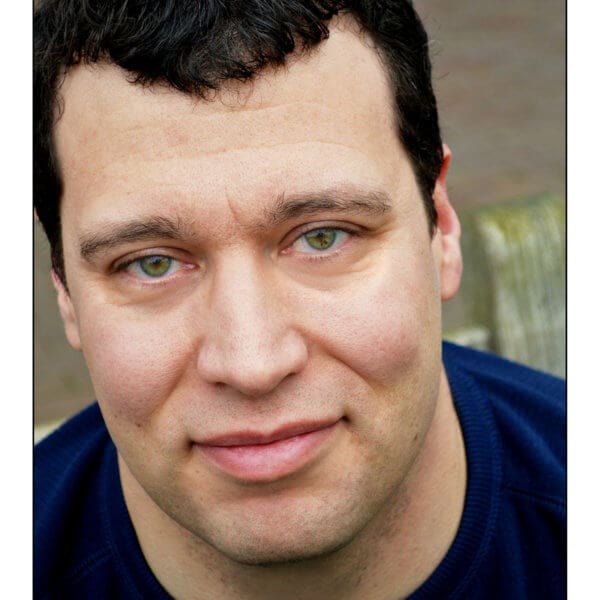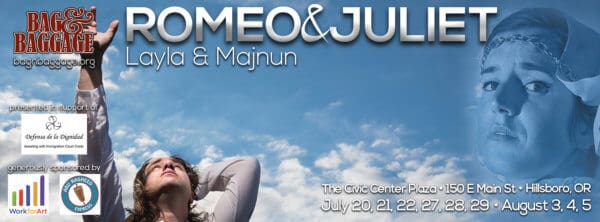- Skip to primary navigation
- Skip to secondary navigation
- Skip to main content
- Skip to primary sidebar
Connections > Divisions: Colin blogs on Romeo & Juliet
 I have to admit, I was very nervous going into this production. With cultural appropriation being a such a hot button topic in the theatrical world these days, I felt a little uncertain about portraying a person of color in a play about the clash between Western and Middle Eastern cultures. Not only was I worried about the acting challenge of playing a person of differing ethnicity but would it be appropriate for me to even try? I would hate to be a part of something that, however well intentioned, would cause any discomfort or controversy.
I have to admit, I was very nervous going into this production. With cultural appropriation being a such a hot button topic in the theatrical world these days, I felt a little uncertain about portraying a person of color in a play about the clash between Western and Middle Eastern cultures. Not only was I worried about the acting challenge of playing a person of differing ethnicity but would it be appropriate for me to even try? I would hate to be a part of something that, however well intentioned, would cause any discomfort or controversy.
Most of my concerns were alleviated immediately. Our first rehearsal featured a discussion addressing these very issues and the consensus was that by pursuing a respectful interpretation of Islamic culture, by setting aside our preconceived notions of Islamic norms, and by listening to our privileged voices in the cast (those with a cultural connection to Islam), we would be able to handle the sensitive subject matter of the play in an appropriate fashion. Increasing my comfort level, Scott related to us the many conversations he had initiated with Muslim scholars all over the country. It was very evident that much thought had been put into heading off any possible backlash to our production.
So now that the pressure of playing against ethnicity had been lessened considerably, the acting challenge still remained. It soon became clear that the easiest way to portray a credible Muslim on stage was to focus on the same things that are important when attacking any role; relationships, intention, specificity, and text. In fact, the more I thought about it, the more I realized that I was focusing too much on playing a Muslim (something “other”) and not enough on just playing a human being with his own unique set of given circumstances. So by paying more attention to the connections between myself and the character instead of the differences between myself and the character, I feel like I have been able to create a more vibrant, three dimensional, character who not only represents the over arching Islamic cultural presence in the piece but is genuinely interesting to watch and has a personal story to tell as well as a cultural one.
And yes, the text is a challenge as well. One of the biggest obstacles we encountered as a cast was the difficulty in homogenizing the Shakespeare and the Nizami so that it wasn’t two pieces of poetry being performed around each other but one synthesized integrated work. My challenge individually was fitting into this shared world even though I speak only Shakespearean text during the show. Again, the solution was focusing on how the two texts are similar rather than focusing on the differences in terms of rhythm and syntax. Nizami’s text is full of lush, lyrical metaphors and it was helpful to find similar passages in Shakespeare’s text and highlight those passages as a way to connect and mesh the two styles of writing.
These solutions lead me to think that one of the essential messages this play sends is that no matter our cultural heritage, we are all human beings capable of love, violence, and everything in between and that perhaps the best way to resolve conflict is to focus on how we are connected instead of what divides us. Hopefully, that message will resonate with our audience and help them think a little differently about the world we live in.
Colin Wood
Nawfal/Mercutio


Reader Interactions